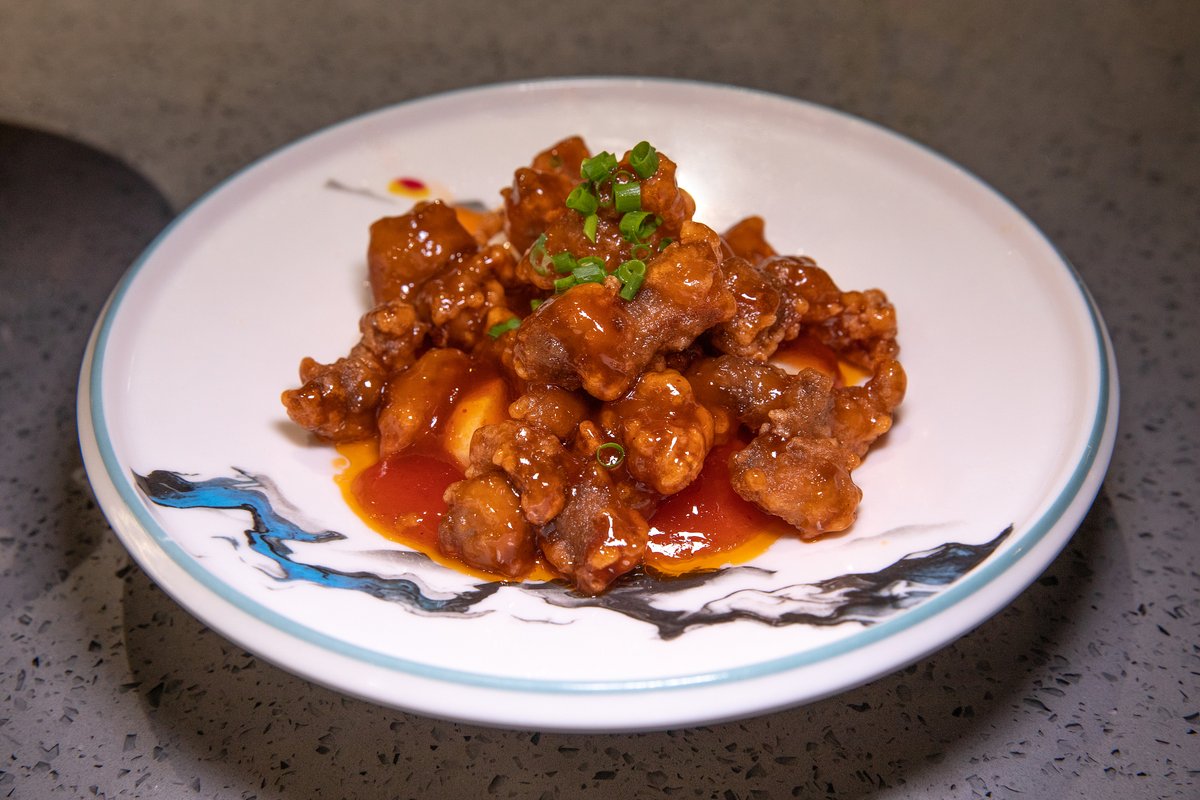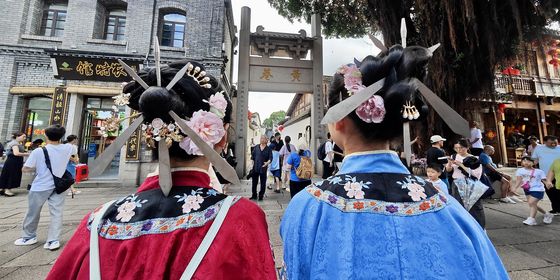Lychees, water chestnuts, and crispy pork…What’s not to like about this succulent Fujian dish?
“A steed raising red dust won the fair mistress’ smiles/ But few knew how many steeds died bringing her lychees from the south,” wrote the poet Du Mu (杜牧) in the Tang dynasty (618 – 907), satirizing Emperor Xuanzong’s reckless indulgence of his favorite concubine, Yang Guifei.
Yet even if one believes all the (dubious) claims about Yang’s extravagance, she was unfairly blamed for this particular excess. According to one legend, Emperor Xuanzong did indeed transport fresh lychees thousands of miles from southern China to his capital of Chang’an (present day Xi’an) in the north, but this was as a favor to Consort Mei, his lover before he met Yang. Lychee pork, or 荔枝肉 (lìzhīròu), a traditional dish of Fujian province, is also said to have been created for Consort Mei.
As the legend goes, Consort Mei was a native of Putian, Fujian, a major lychee growing region. After joining the emperor’s harem, she fell into low spirits and lost her appetite due to homesickness. To cheer her up, a chef surnamed Jiang, who had accompanied Consort Mei from home, rolled pork slices into the shape of lychees, fried them, and then stewed them with sweet-and-sour seasonings. This later became known as lychee pork.
Crispy, tender, and aromatic, the dish immediately won the hearts of Consort Mei and the emperor, who was soon invited for a taste. Seeing how much the consort missed home, the emperor ordered the delivery of lychees from Putian. Lychee pork was regularly served in Consort Mei’s palace during her lifetime, and after her death during the An Lushan Rebellion (755 – 763), Chef Jiang brought the dish back to Putian.
This heartwarming tale, though, has been refuted by many scholars, including the 20th century writer Lu Xun (鲁迅), who believed that Consort Mei was fictional. The earliest reliable record of lychee pork appeared in the recipe book Suiyuan Shidan by Yuan Mei (袁枚), a scholar and gourmand from the Qing dynasty (1616 – 1911). Yuan’s recipe calls for pork slices to be boiled in water, fried, and stewed in wine and soy sauce. In the modern version, the pork slices are finely cut in a crisscross pattern to make them easier to shape. Water chestnuts are added, or sometimes potatoes or sweet potatoes.
Water chestnuts, mainly grown in Guangxi, Fujian, and some regions of southern and central China, are nicknamed “underground ginseng.” They serve as a fruit, vegetable, as well as medicine in Chinese cooking. According to Ming dynasty (1368 – 1644) medical text Compendium of Materia Medica, water chestnuts can relieve internal heat, promote digestion, and nourish the lungs and liver. They’ve also been considered the ideal complement to lychees since at least the Song dynasty (960 – 1279) when poet Chen Mi (陈宓) praised them as “purple pearls…as tasty as lychee.” Consort Mei would surely have been sated.
Ingredients:
300g pork tenderloin 里脊肉
100g water chestnuts 荸荠
35ml liquid starch
5g red yeast rice flour 红曲粉
500g cooking oil 食用油
30g bone broth 骨汤
15g soy sauce 酱油
13g vinegar 醋
2 cloves of garlic 蒜瓣
15g white sugar 白糖
Steps:
- Slice the pork into rectangular pieces about half the size of one’s palm. Cut crisscross patterns on the surface, then cut each piece into two triangles
- Chop the water chestnuts and garlic
- Mix pork slices and water chestnuts evenly with the red yeast rice flour and 30ml of liquid starch. Leave for 10 minutes
- Mix the bone broth, soy sauce, vinegar, white sugar, and the remaining 5ml of liquid starch into a sauce
- Roll the pork slices into balls, with the crisscross pattern on the outside
- Heat oil in a wok and fry the meatballs and water chestnut slices for two minutes. Drain the oil
- Heat 15ml of oil, and stir-fry the minced garlic until aromatic
- Add the sauce and bring to boil
- Add the meatballs and water chestnuts. Stir-fry for a few seconds, and serve
Fruit of the South is a story from our issue, “You and AI.” To read the entire issue, become a subscriber and receive the full magazine.













